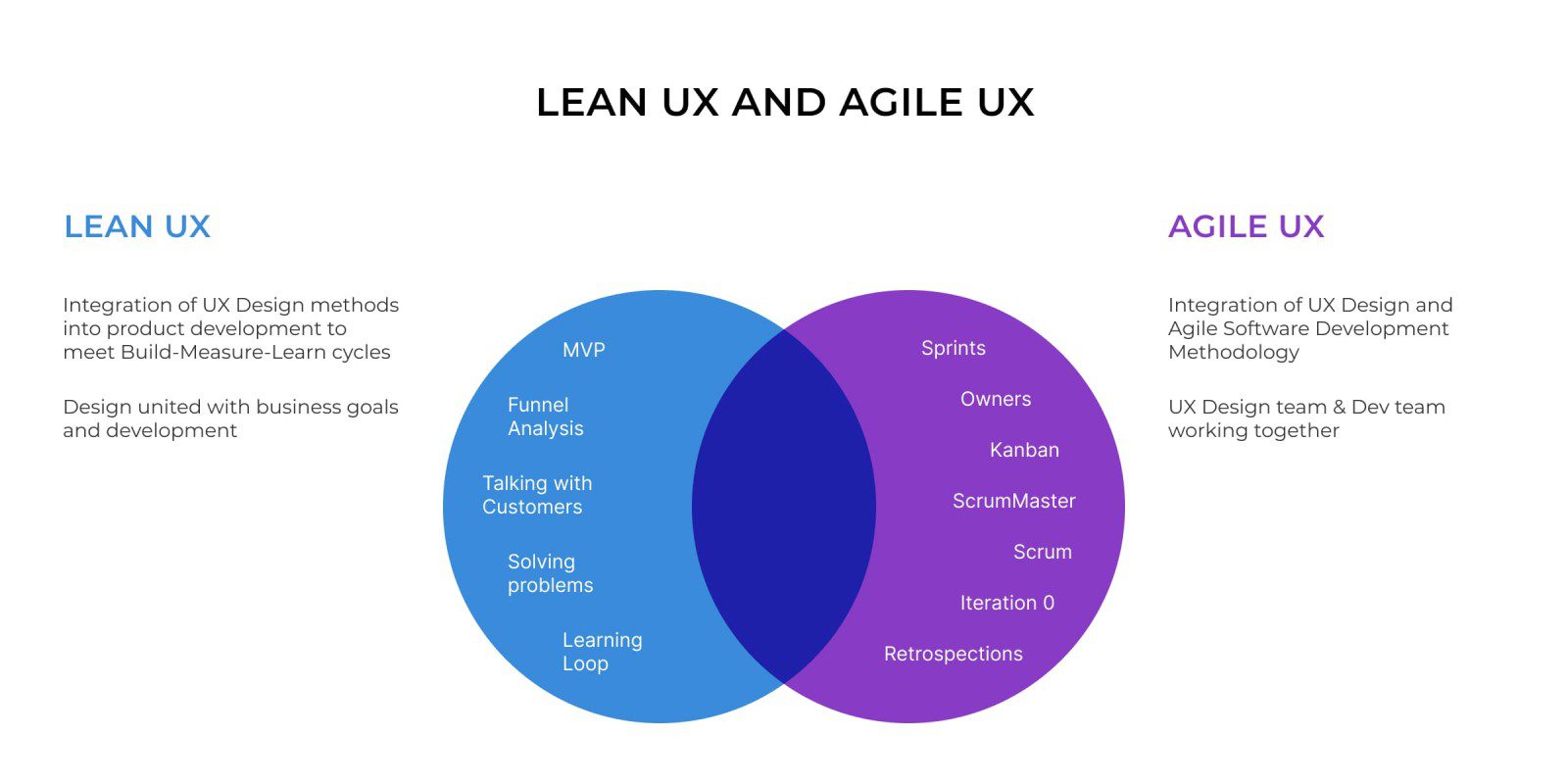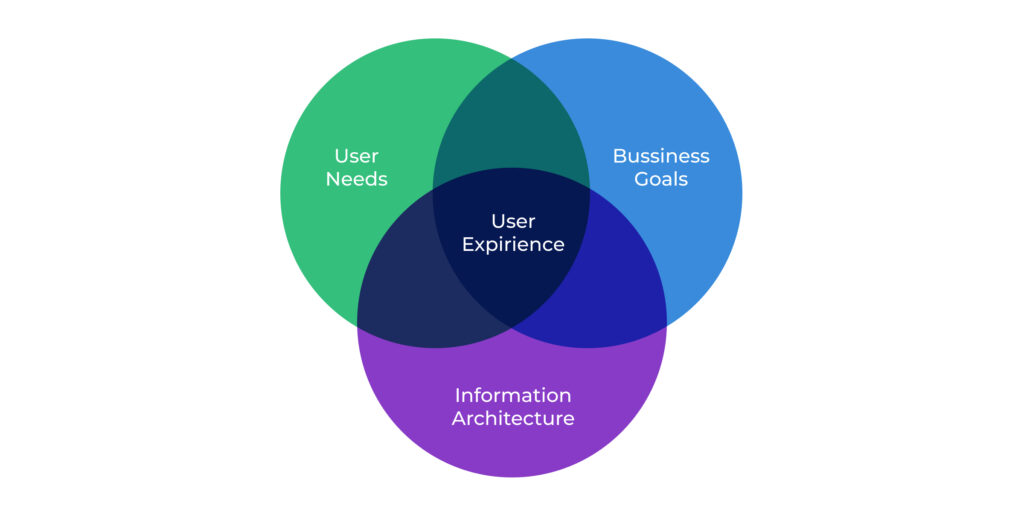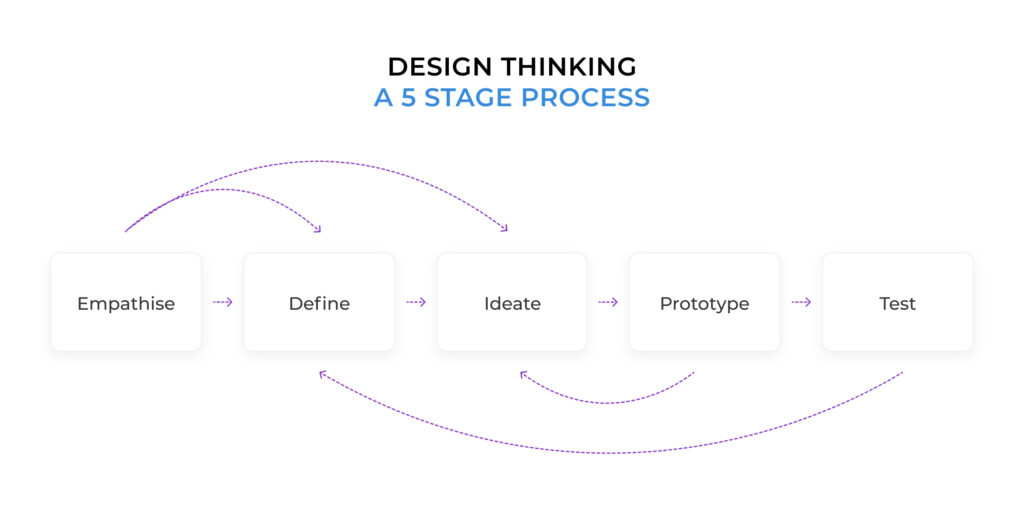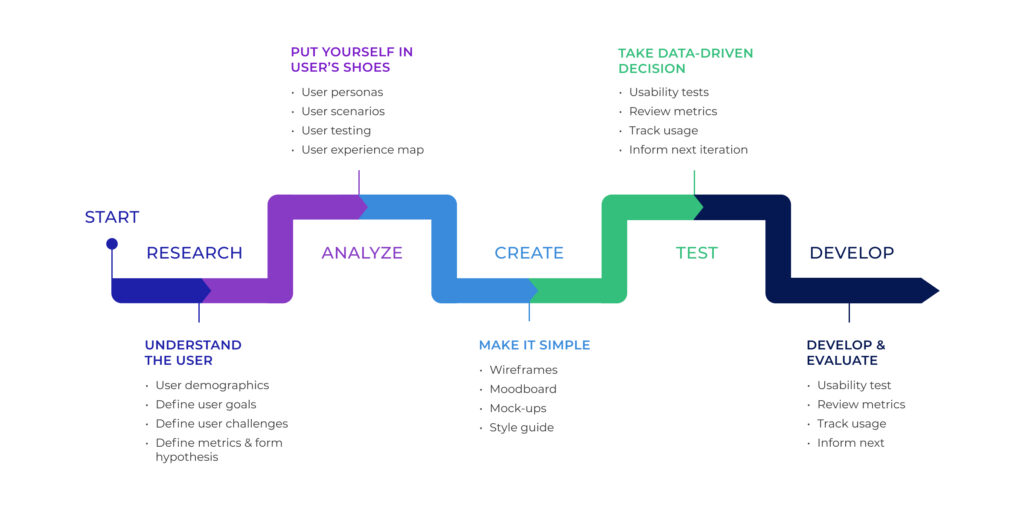Related Posts


Oct 2024
Tips for Enhancing User Experience in Web Development
You also might be thinking the tips on Implementing Improved User Experience in Web Development as Nowadays, the role of a website, ironically, depends on how well it caters to the user. With regards to web development, UX is no longer just about aesthetes-it has much deeper connotations relating to intuitive and fluent interaction that also satisfies the users. Optimizing User Experince ensures that the users can navigate a site without much hassle, find exactly what they need, and walk away with a positive impression-most likely to return. In this blog, we are going to venture deeper into the most crucial hints toward improving user experience in web development using industry-proven UX best practices and focus on web development, user experience, website UX, web design, and UX optimization. 1. Optimize website speed Website speed, as stated in user experience, is one of the critical factors. According to research, one second delay in loading time result in millions of lost conversions. It is expected from the users that a web page will load in no time otherwise dragged away from the site. The developers must optimize following points about it:Compress images and files.Browser caching must be utilized.CSS, JavaScript, and HTML should be minified.A reliable CDN must be used.Speed optimization directly influences both user satisfaction and search rankings, so it is an area to focus on in User Experince Optimization. 2. Simplify NavigationThe good User Experince of Website ensures that users can easily find what they need without confusion. This reduces the number of clicks to access the information sought and makes it intuitive. Use the best following practices of Web Design: Logically arrange your menuUse sparingly populated navigation bars.Clearly define categories and subcategories.The search bar should not be difficult to locate.A confusing Web Development website navigation system will make users uncomfortable and leave the page. Simplify it so that visitors will stick and avoid the bounce rate. 3. Mobile OptimizationMobile Optimization is one of the prominent UX Best Practices nowadays. For instance, most users usually use smartphones and tablets to access websites. So your design needs to be Mobile responsive. Use a mobile-first approach in developing your Web.Test the responsiveness of your Website on several devices and sizesAvoid using larger images and videos that would result in more time-consuming loading for a mobile user.Design navigation buttons thumb-friendly.Responsive design allows for content to be resized to accommodate a variety of screens, while it makes Website UX better for all users, regardless of their device. 4. Use White Space ThoughtfullyWhite space is so undervalued but is, without a doubt, one of the strongest elements in UX Optimizing. It eliminates the overwhelming feeling one would experience while checking a website, hence turning the content into a readable piece that also looks beautiful. Here's how you can bring white space into your Web Design: Balance through space between text and images.Application of padding in buttons and menus for navigation purposes.Divide sections of content for easier understandingWhite space also enhances the overall visual look, hierarchy, and assist in guiding users through the site logically as well as interestingly. 5. Readability and TypographyContent is the body of every website. For an excellent User Experience, it must be readable. How users consume content is very much dominated by typography. Here are a few UX Best Practices for improving readability:Only legible fonts should be used with the same font size throughout the website.Color contrast should be such as it is easy on the eyes while surfing pages full of text.Too much block texts must be broken into heads and bullet points and visualizations.Only a few types of number of fonts should be used in order to have coherence.Keeping readability as the aspect developers can create seamless Website UX that will keep users interested and informe. 6. Clear Calls to Action (CTAs)A well-crafted website should nudge visitors toward taking an action: signing up for a newsletter, making a purchase, or downloading a resource. But nothing gets users to click like a clear, color-bolty Call to Action (CTA). Try these Web Design tips: Make CTAs stand out with contrasting colors.Use action words such as "Sign Up," "Learn More," or "Download Now."Position CTAs throughout the site so visitors can easily find them.Without using obvious CTAs, your users may depart without converting, therefore reducing the efficiency of your UX Optimization efforts. 7. Keep the Same Consistency on Various PagesConsistency is an elementary building block in UX Best Practices. Consistency on various pages, by keeping the layout, colours, fonts, and style the same for all, makes it easy for the visitors to get familiar. Here's why you should apply consistency in Web Development: It makes it easy for the visitors to navigate your site by giving a predictable pattern.It helps strengthen brand identity, making the site more memorable.It ensures that there is no need for relearning how to use your site as users navigate through different parts.By being consistent in design and functionality, you can enhance the overall User Experience. 8. Test and Iterate ContinuouslyNo development project of website development is ever complete without continuous testing and iteration. An important part of UX optimization is user testing, which can easily point out the areas of pain and those that need improvement. Conduct usability testing with real users to obtain real feedback with improvements integrated along the way. Key areas for testing include: Page loading speedResponsiveness on different devicesNavigation and ease of use.Frequent testing ensures that the Website UX is constantly changing with changing user needs and with the advancement of technology. 9. Personalize User ExperiencePersonalization can dramatically enhance User Experience by making users believe that a website is specifically designed for them. You may take it a notch higher with personalized recommendations, content, or even a greeting based on the behavior of the users. Here are some ways to do this effectively: By using data-driven insights to curate content based on the various types of usersBy serving personalized recommendations based on their browsing historyFor implementing user-specific CTAs and landing pages.Custom content is targeted at maximizing engagement and keeping users on your site. 10. Safe and Accessible Web SitesSecurity and accessibility are two aspects that hold importance in User Experience. Therefore, a website that values security and accessibility can assure the audience about its trustworthiness and accessibility. The ideas include: Having HTTPS to browse the web securelyFollowing WCAG concerning standards of web accessibilityAdding alt text to images and making it accessible by screen readers.CAPTCHA or two-factor authentication should also be implemented on key activities, which include log in. The accessible and secure website meets legal standards. This includes an inclusive Website UX for all users. ConclusionBeyond attractive Web Design, Improving the User Experience of Web Development is actually smooth, efficient, and enjoyable functionality. From optimization of loading time to personalization of interactions, each of these tips can drive you toward this goal. Use these UX best practices, continuously test, and you can ensure that your website satisfies the expectations of your users but will also provide value beyond their expectations, leading to a good amount of conversions and user satisfaction.


Oct 2024
E-Commerce Development Strategies to Boost Online Sales
E-Commerce Development Strategies to Boost Online SalesWith the highly competitive nature of the marketplace in today's digital world, a sound strategy towards e-commerce development is one of the most crucial elements for building and giving a boom to online sales. Since businesses tend to expand and go online, they are in that critical point in taking up some serious and robust e-commerce solutions that do not attract just a customer but keep him engaged for a repeat purchase. No matter whether you just begin a web store or strive to improve your existing one, effective strategies can significantly affect sales performance. Here is an elementary guide with some of the leading e-commerce strategies to enhance sales and propel your business. 1. User-Centric Website DesignTo make all visitors go from being visitors to becoming customers, the design of your e-commerce site has a critical function. A clean site and easy navigation improve user experience, making all the difference in retaining potential buyers. Invest in the development of an e-commerce version that is designed for optimization of your layout, speed, and functionality.Responsive Design: The website needs to be responsive as most customers browse and shop through their mobile devices.Easy Navigation: The navigation should be easy to navigate. When the products are categorized, and there is a search bar, it simplifies the efforts to locate whatever a customer might need, which in turn increases the chances of sale. 2. Optimized Product PagesThe product pages have to deliver a smooth shopping experience. High-quality images, product descriptions, and user reviews- all contribute to convincing prospects to make a purchase. Here are some e-commerce solutions that shall further enhance the sales of your products:Product Images: Include high-resolution images with various views of a product. Zoom features, along with 360-degree views, will definitely give the customer a better feel for the product.Compelling Descriptions: Craft short, engaging, informative, and expressive descriptions that emphasize the best features and benefits the product can offer customers and create value for customers.Customer reviews: Positive feedback and reviews develop trust. Allow customers to comment on products quickly and ensure reviews appear right on the product page. 3. Personalized User ExperiencePersonalization is a tremendous e-commerce strategy that boosts customers' engagement and sales potential. Personalized marketing strategies allow tailored shopping experiences for individual customers.Personalized Suggestions: Leverage data about customers to return personalized product suggestions based on their browsing and purchase histories. This may ultimately result in cross-selling and upselling.Email Marketing Targeting: Personalize your email campaign by making sure emails contain product suggestions, offers, or reminders of abandoned carts. The more personalized your emails, the higher the rates of opening and converting into sales will be. 4. Effective E-Commerce Marketing StrategiesIt will boost sales when properly and strategically aligned with your business goals so your e-commerce marketing efforts are aimed at taking your best shot. A comprehensive marketing strategy not only attracts new customers but keeps the existing ones. Here are some effective e-commerce marketing strategies that can be helpful to you:SEO: The best possible SEO practices will lead your e-commerce store closer to the top rankings on search engines, and that is how more organic traffic will reach it. Do keyword optimization of your product descriptions, meta tags, and also in your blogging content.Social Media Marketing: You can showcase your products on Instagram, Facebook, and Pinterest, among other social media since such people are great platforms for engagement. Run an ad or promotion with a specific demography in order to attract more traffic to your stores.Content Marketing: Blog relevant issues that are important in your industry, create how-to guides, or provide useful tips on how to use your products. This will attract prospects to your business and improve your SEO rankings, making your brand a thought leader in the industry. 5. Smooth Check-Out ProcessThe main cause of cart abandonment is a complicated checkout process. Simplifying this will prove to be a fantastic way to increase sales and dramatically minimize abandonment.Guest Checkout Option: This will enable customers to make a purchase without registering into the site. Friction from guest checkout is reduced and the speed at which a transaction completes.Multiple Payment Options: These allow shoppers to pay using a credit card, digital wallet like PayPal or Apple Pay, or buy-now-pay-later services. The ease at which a customer completes buying anything on a site increases.Build a trusted site by using a secure payment gateway, which secures customer information and makes the transaction process smooth. 6. Leverage Data and AnalyticsThe best way to tailor your e-commerce plan is to understand customer behavior. Data analytics will help you spot trends and track sales performance to ensure that the information used in making decisions will help you make the right data-driven decisions and see your store's overall success as worth it.Customer Insights: Analytics tools can gather insights on customer preferences, buying behavior, and site performance, allowing you to adjust your marketing strategies and product offerings according to customer needs.A/B Testing: Continuously test which of the website's elements, such as call-to-actions, product images, or promotional banners, work best for sales. A/B testing helps determine what moves sales best. 7. Loyalty Programs and IncentivesEncourage repeat business—after all, it's the surest guarantee of long-term growth. Offer incentives through discounts, free shipping, or points to ensure people keep coming back to your store.Loyalty Programs: Implement a loyalty program where reward points are gathered for each purchase and can be redeemed to acquire discounts or branded merchandise, thus encouraging repeats.Seasonal Discounts and Promotions: Controlling impulse promotions or seasonal promotions during important events, such as Black Friday, Diwali, or Christmas, can attract large crowds in the shop and increase sales. 8. Effective Customer ServiceCustomer support is one of the most critical ways to build trust and ensure customer satisfaction. Quick and efficient support boosts your brand's reputation and high conversion rates.Live Chat: Offer live chat support to reduce the response time to the minimum possible time required to deal with customer queries promptly. Quick and helpful responses increase customers' confidence in making purchases.FAQs and Self-Service: Add an FAQs section detailed on the website. All frequently asked questions will be answered, so the customer does not need to contact support.Conclusion:You should employ strategies that will keep you at the top of your game. Examples of such methods include optimising your website design, offering a personalized shopping experience, or crafting the right kind of e-commerce marketing campaigns that place your store at the top in this changing climate of e-commerce. Expand further with the business, and it has always shown that it is not static with the movement of action and adaptation into modern trends in the development of e-commerce to sustain and maintain its online store.Invest in the appropriate e-commerce solutions, keep your customers satisfied, and here is a boost in the sales count and consistent relationships.


Jan 2024
Future Trends in Telecom Software for Cloud Contact Centers
For many years, contact center operations have been centered around telecommunications software. These contact centers have changed significantly since the introduction of cloud computing. Still, the landscape is changing quickly. This article explores the future trends that are anticipated to influence telecom software development in cloud contact centers, with an eye on how these developments will transform operational efficiency and customer service. Evolution of Telecom Software in Cloud Contact Centers Revolutionary technological developments have shaped the growth of telecom software in contact centers, changing the face of communication and customer care. In the past, contact centers relied on technology and software that were located on-site, had limited scalability, and were tied to certain locations. However, contact centers experienced a fundamental shift as cloud computing emerged. These centers' operations were completely transformed by cloud-based technologies, which brought accessibility, scalability, and flexibility. Since telecom software served as the glue holding together different aspects of data management and communication, it was essential to this transition. Current Landscape and Challenges Even with these developments, there are still several obstacles facing telecom software in cloud contact centers today: Integration Difficulties: Contact centers continue to have difficulties when integrating various technologies and apps. Modern cloud-based solutions frequently have trouble synchronizing with ancient systems, which results in operational inefficiencies. Security worries: As contact centers handle a growing amount of data, security becomes critical. It's a constant struggle to make sure telecom software has strong security features to safeguard sensitive consumer data from online attacks. Personalized Customer Experiences: It might be difficult to meet the growing demands of customers for tailored interactions. Telecom software must enable consistent and personalized consumer experiences across several channels in a seamless manner. Future Trends in Telecom Software for Cloud Contact Centers 1. Integration of 5G and Its Effects Contact center operations will change once 5G technology is included. 5G will benefit from enhanced video calling and augmented reality compatibility, enabling more immersive customer experiences and real-time interactions with lower latency and quicker speeds. 2. Automation and AI Automation and artificial intelligence (AI) have the potential to completely change how customers engage. Artificial intelligence (AI)-powered chatbots and virtual assistants will respond to queries instantly and uniquely, freeing up human agents to address more complicated inquiries. Routine work will be streamlined by automation, increasing productivity overall. 3. Communication Through Multiple Channels Seamless omnichannel communication is the way of the future. Regardless of the platform selected, telecom software will provide seamless communication over several channels such as chat, email, social media, and voice, guaranteeing a cohesive and uniform customer experience. 4. Analytics and Insights from Data Contact centers will be empowered by using predictive analytics and big data. By analyzing consumer behaviour patterns, telecom software will be able to provide preemptive support and tailored interactions, which will increase customer happiness. 5. Safety and Observance It will be essential for telecom software to have improved security features. Contact centers will concentrate on putting strong authentication, encryption, and compliance procedures in place to protect consumer data by changing legal requirements. 6. Adaptability and Expandability Customization and scalability will be prioritized in telecom software of the future. It will be essential to enable easy scalability and customize solutions to meet individual business needs to support expansion and adjust to shifting demands. Implications and Benefits of Future Trends Future trends in telecom software for cloud contact centers are expected to have a variety of effects and advantages, influencing customer service and operational effectiveness: 1. Improved encounters with customers Upcoming developments in telecom software should lead to previously unheard-of levels of consumer satisfaction. By combining omnichannel communication, AI-driven interactions, 5G technology, and personalized data, contact centers will be able to provide smooth, customized experiences across a range of touchpoints. Stronger client loyalty and satisfaction will result from this improved standard of service. 2. Improved Operational Efficiency Contact center operations will be more efficiently run with the use of cutting-edge telecom software trends. Routine queries will be handled by AI-powered automation, which will lighten the strain on agents and free them up to deal with more complicated problems. By enabling proactive problem-solving and resource allocation, predictive analytics will maximize productivity and resource use. 3. Resource Allocation and Cost Optimization Upcoming developments in telecom software should result in lower costs and more effective resource management. The automation of repetitive processes will result lower operating expenses, and more efficient resource allocation will be made possible by analytics' predictive power. Contact centers will experience increased cost efficiency as a result of this optimization. 4. Industry Competitive Advantage Contact centers can get a competitive edge by adopting the newest telecom software developments. Companies that take advantage of these developments as soon as possible will be in a better position to match changing consumer needs, beat rivals, and stand out from the competition. 5. Information-Based Decision-Making Decision-making procedures based on data would be made possible by advancing telecom software. Contact centers will have access to a multitude of customer insights that will allow them to build and implement well-informed customer relationship management, product development, and service enhancement initiatives. This data-centric strategy will promote ongoing improvements in the calibre of services. 6. Adaptation to Changing Demands Contact centers can be made more resilient to changing market conditions by utilizing cutting-edge telecom software. Over time, scalable solutions will maintain the contact center's agility and relevance by adapting to changes in technology, regulations, and customer needs. 7. Elevated Employee Experience Contact center agents can concentrate on more intricate and meaningful interactions as basic chores are automated by telecom software. A more motivated and engaged workforce will result from this change in job satisfaction, skill development, and professional progress. Challenges and Implementation Considerations Despite how promising these trends may be, obstacles must be overcome for them to be implemented successfully: Mitigating Integration Complexity: To address integration complications and make integrations go more smoothly, it may be necessary to implement phased transitions or specialized middleware. Training and Skill Development: To properly utilize the new telecom software features, contact center employees will need to receive training. Developing skills will be essential if we are to fully utilize the promise of cutting-edge technologies. Infrastructure Compatibility: It will be essential to make sure that the current infrastructure is compatible with the telecom software that is developing. It can be necessary for contact centers to update or change their systems to comply with these improvements. Cloud contact centers seem to have a bright future as long as telecom software keeps improving. Operations will become more customer-focused and efficient if these trends are adopted. The coming together of 5G, AI, omnichannel communication, analytics, security, and scalability will completely change the game and establish new standards for the quality of contact centers.











